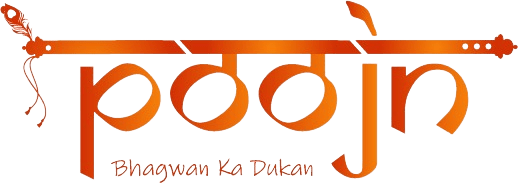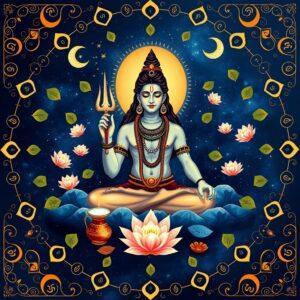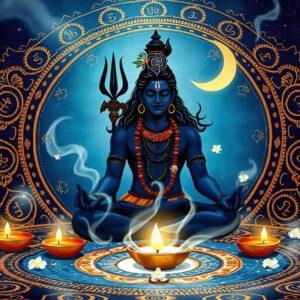Holi, the vibrant **Festival of Colors**, is a cherished celebration deeply rooted in Indian culture and tradition. It signifies the **triumph of good over evil**, the **arrival of spring**, and the **end of winter**. This festival, also known as the **Festival of Love**, is a time for joy, unity, and the renewal of life.
Historical and Mythological Significance of Holi
The origins of Holi are steeped in history and mythology. Ancient Hindu scriptures, such as the Puranas, narrate tales associated with Holi. The legend of **Prahlad and Holika** embodies the victory of good over evil, a central theme of the festival. Lord Krishna’s playful interactions with Radha and the gopis are integral to Holi celebrations, particularly in regions like Mathura and Vrindavan. The Bhakti movement played a significant role in popularizing Holi across various parts of India. Even Mughal emperors like Akbar and Jahangir embraced and promoted the festival. Holi’s cultural significance is reflected in classical Indian art, music, and dance forms, showcasing its enduring presence in Indian heritage.
Rituals and Traditions of Holi
Holi is celebrated with a variety of rituals and traditions that vary across different regions of India. **Holika Dahan**, a bonfire ritual on the eve of Holi, symbolizes the burning of evil, cleansing the community for the festivities to come. Traditional Holi delicacies such as **gujiya, thandai, and bhang** add a unique flavor to the celebration. Natural colors, traditionally prepared from flowers and herbs, are used to smear friends and family, symbolizing love and joy. Playing with colors, water balloons, and pichkaris brings an element of fun and camaraderie. Singing and dancing to folk songs and bhajans, especially ‘Phagwa’ songs, are an integral part of the celebrations. Different regions have unique customs, such as Lathmar Holi in Barsana, Yaosang in Manipur, and Shigmo in Goa, demonstrating the diverse expressions of Holi across India. In rural communities, Holi is an occasion for social bonding and reinforcing communal harmony.
Regional Variations of Holi
Holi is a festival that takes on unique forms across the diverse landscape of India. In North India, especially in Uttar Pradesh, cities like **Mathura and Vrindavan** become vibrant centers of Holi celebrations, with processions and re-enactments of Krishna’s life. Rajasthan witnesses grand Holi celebrations hosted by royal families, adding a regal touch to the festivities. In West Bengal, **Basanta Utsav**, introduced by Rabindranath Tagore, blends Holi with Bengali culture and arts. Bihar and Jharkhand celebrate **Phaguwa**, which features folk songs and traditional dances. Punjab’s **Hola Mohalla** showcases impressive martial arts displays. Maharashtra’s Holi celebrations are marked by **Puran Poli and Rangpanchami**, adding distinctive local flavors. South India also has its own traditions associated with Holi, with variations in Karnataka and Tamil Nadu, where it is known by different names and involves distinct rituals.
Contemporary Relevance and Global Celebrations of Holi
While retaining its traditional essence, Holi has adapted to modern times. Urbanization and modernization have influenced how Holi is celebrated in cities compared to rural areas, where traditional practices are often more prominent. Social media and technology play a crucial role in promoting and organizing Holi events, connecting communities globally. Holi festivals are gaining popularity worldwide, bringing together diverse communities in a shared celebration of color and joy. Growing awareness of environmental concerns regarding synthetic colors and water wastage has led to a push for eco-friendly Holi celebrations. The commercial aspect of Holi has also grown, with parties, music festivals, and themed merchandise becoming increasingly popular. The cultural exchange and fusion of traditions as people from diverse backgrounds participate in Holi celebrations highlight the festival’s enduring global appeal.
How Poojn.in Enhances Your Holi Celebrations
Poojn.in, India’s leading cultural goods and services store, offers a wide range of authentic products to enrich your Holi celebrations. Enhance your festivities with our premium natural color powders and incense sticks. We also provide a wide selection of prayer beads and other religious items to make your Holi spiritually fulfilling.
-
Premium Gulal/Abeer: Available in various pack sizes, from 50 gm to 500 gm, catering to diverse needs and ensuring a vibrant Holi celebration.
-
Special Five-Color Gulal Pack: A convenient pack containing all the essential colors for a traditional Holi celebration, simplifying your shopping experience.
-
Skin-Safe and Vibrant Colors: Our Gulal is safe for skin application, ensuring a worry-free celebration with vibrant and long-lasting colors.
-
Complete Holi Essentials: Poojn.in provides all the necessary items for a complete Holi celebration, from traditional Pooja items for Holika Dahan to decorative items to create a festive atmosphere.
-
Authenticity and Convenience: As India’s largest Dashakarma bhandar, Poojn.in guarantees genuine products. Our online platform provides the convenience of shopping from home, preserving the sanctity of Holi while adapting to modern lifestyles.
FAQs on Holi
What is Holi? Holi, the “Festival of Colors” or “Festival of Love,” is a Hindu festival celebrating the arrival of spring and the victory of good over evil.
How does Holi differ from Diwali? Holi is a spring festival centered around colors, while Diwali is an autumn festival of lights. Holi involves playing with colors, whereas Diwali involves lighting lamps and fireworks.
Why is color thrown during Holi? Throwing colors symbolizes joy, love, and the arrival of spring. It reflects Lord Krishna’s playful nature.
What is the significance of Holika Dahan? Holika Dahan, the bonfire lit on Holi’s eve, symbolizes the burning of the demoness Holika and the triumph of good over evil. It’s a time for prayer and celebration.
How is Holi celebrated across India? Holi celebrations vary regionally. North India focuses on colors and water play, Bengal celebrates Dol Jatra with singing and dancing, and South India emphasizes religious rituals and temple visits.
What are some traditional Holi foods? Traditional Holi treats include gujiya, thandai, dahi bhalla, and other sweets and snacks, enhancing the festive spirit.
What does Holi represent for the Indian community? Holi is a time of joy, unity, and celebration for the Indian community, fostering forgiveness, strengthening relationships, and celebrating love and friendship.
Conclusion: Embracing the Spirit of Holi
Holi, with its vibrant colors, rich traditions, and joyous celebrations, transcends mere festivity. It’s a celebration of life, love, and the victory of good over evil. By understanding its cultural significance, we honor our heritage and bring its spirit to life in the modern world. As you celebrate Holi, remember the values it represents—unity, joy, and renewal. Whether you celebrate with family in India or join a global event, the essence of Holi remains universal. Embrace the festival with love, respect, and eco-conscious practices to preserve its spirit for generations to come. May your Holi be filled with vibrant colors, cherished moments, and the spread of happiness and harmony.


